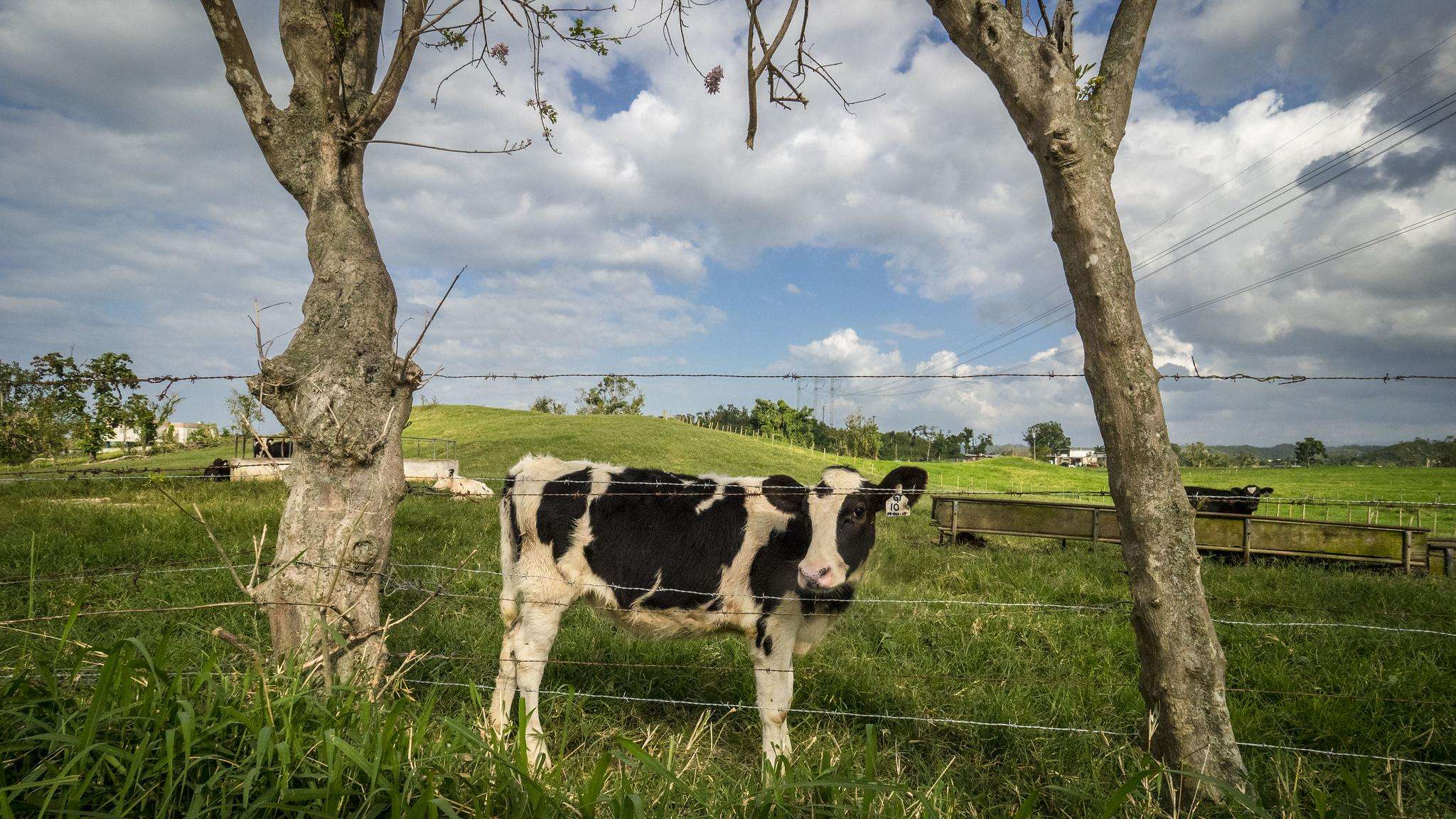Bluetongue

Bluetongue is an insect-borne, viral disease that affects sheep, cattle, and other ruminants. The bluetongue virus is transmitted by biting midges (Culicoides spp.); it is not contagious from animal to animal. Infections range from mild to severe, depending on the species affected. Sheep are most likely to show symptoms. Most infections in cattle are asymptomatic.
Bluetongue is classified by the World Organisation for Animal Health (WOAH) as present in the United States, where the insects that spread the virus are present. APHIS follows WOAH reporting requirements for this disease.
Signs in cattle are rare but may be similar to those seen in sheep. In infected sheep, bluetongue damages the blood vessels, resulting in hemorrhage (internal bleeding), lack of oxygen in the blood, and necrosis (death) of affected tissues. Infections are more obvious in young lambs, and the mortality rate can be high (up to 30 percent).
Signs vary and can include:
- Fever (105–107.5 °F)
- Listlessness, reluctance to move
- Swelling of lips, tongue, nose, face, jaw, eyelids, and sometimes ears
- Excessive salivation, congestion, and nasal discharge
- Ulcers in the mouth and nose
- Difficulty breathing; increased respiratory rate
- Lameness and depression
- Severe swelling of the tongue; may become cyanotic (“blue" tongue) and even protrude from the mouth
- Abnormal wool growth (resulting from dermatitis)
- Abortion or birth of malformed lambs or calves
Producers should use insecticides to reduce biting midge (Culicoides spp.) populations, the insect that spreads bluetongue. This will help lower the risk of animals being exposed to the virus. Producers should consult their veterinarian for guidance on insect control.
There's no cure for bluetongue. Infected animals should receive supportive care.
Report Signs of Animal Disease
Producers or owners who suspect an animal disease should contact their veterinarian to evaluate the animal or herd. Find an accredited veterinarian.
Animal health professionals (veterinarians; diagnostic laboratories; public health, zoo, or wildlife personnel; and others) report diagnosed or suspected cases of nationally listed reportable animal diseases to APHIS District Offices and to the State animal health official as applicable under State reporting regulations.
Controlling Bluetongue
Bluetongue is present and stable in the United States.
Serotypes in the United States
Several serotypes have been reported in the United States. Some are listed as established as of September 2022:
- Established: (Serotypes 3, 6, 10, 11, 12, 13, 17) A specific serotype has been reported annually for 2 consecutive years in a geographic region where vector incursions due to weather events would not be expected; or there is documented phylogenetic evidence of virus reassortment with previously established strains in domestic and wild animals.
- Reported: (Serotypes 1, 2, 5, 9, 14, 15, 18, 19, 22, 24) A detection based on the current APHIS BTV serotype case definitions that has not been detected in the past 5 years; or detection in geographic regions where vector incursions due to weather events are expected and have not been detected consecutively for 2 years.
- Not reported: (Serotypes 4, 7, 8, 16, 20, 21, 23, 25, 26)
Though never reported in the United States, the European serotype 8 is of particular concern because of its high virulence, the potential for transplacental transmission in cattle, and the presence of competent vectors in the United States.
Viral serotypes are spread by Culicoides spp. insects (biting midges) when they bite susceptible animals. There is some epidemiological data that suggests virus adaptation to vector species is required for efficient spread as not all Culicoides species transmit all serotypes with equal efficiency.
APHIS works with affected States to respond quickly and eradicate outbreaks of bluetongue when they occur. We report all outbreaks to the World Organisation for Animal Health.
We also explore the best available countermeasures to control the disease within established regions and keep it from spreading to new areas.
Testing
Veterinarians should collect whole blood (EDTA, sodium citrate, or heparin) from febrile animals and spleen and lymph nodes from dead animals. Whole blood is the best premortem sample as orbiviruses are associated with erythrocytes. For dead animals, organs and tissues should be stored and transported chilled but not frozen. Real-time reverse-transcriptase polymerase chain reaction (RT-PCR), both for BTV and specific serotypes, and virus isolation (VI) are available.
Animals that become infected with bluetongue virus typically develop a serologic response within 7–14 days after exposure; these circulating antibodies generally remain lifelong. To document exposure to the virus, we recommend competitive ELISA (cELISA) for screening followed by serotype specific virus neutralization (VN; cross reactivity between serotypes is not unexpected). Agar gel immunodiffusion (AGID) can be used but has known cross reactivity with antibodies to epizootic hemorrhagic disease.
- 2013 Bluetongue and Epizootic Hemorrhagic Disease Workshop Report: This report assesses the available scientific information and countermeasures to effectively control and mitigate the impact of an outbreak of an emerging Orbivirus with epizootic potential, with special emphasis given to bluetongue virus and epizootic hemorrhagic disease virus.

